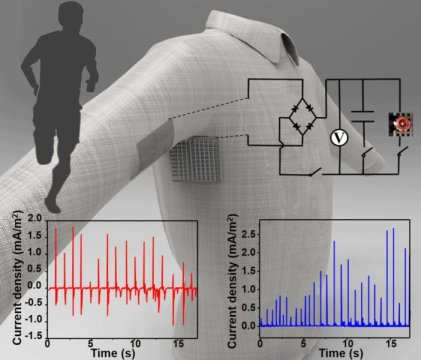Performance enhancing smart textiles intended for use in athletics, extreme sports and military applications are in their infancy. E-textiles that can regulate body temperature, reduce wind resistance, control muscle vibration, or guard against environmental hazards are designed to be worn, and seamless integration of textile with electronic elements has produced some less than comfortable garments.
But recently a team of chemists has made 3D printed E-textiles that can be used for energy management using two inks—a carbon nanontube solution to build the conductive core of the fibers and silkworm silk for the insulating sheath. Other materials that adjust for flexibility, biocompatibility, and waterproofness could also be used. Injection syringes filled with the inks were connected to the coaxial nozzle, which was fixed on the 3D printer. These were used to draw customer-designed patterns, such as Chinese characters meaning PRINTING, the English word SILK, and a picture of a pigeon.

“We proposed a coaxial nozzle approach because single-axial nozzles allow only one ink to be printed at a time, thus greatly restricting the compositional diversity and the function designing of printed architectures,” said Yingying Zhang, a professor in the Department of Chemistry at Tsinghua University.
Electrical components, such as LED fibers, are usually manually sewn into fabrics, but these multi-step processes are labor-intensive and time-consuming. A 3D printer, however, can build versatile features into fabrics in a single step and is cheap and easy to scale. The nozzle is compatible with existing 3D printers and the parts can be swapped. Resolution of what can be printed is limited to the mechanical movement accuracy of the 3D printer and size of the nozzles, however.
“Our long-term goal is to design flexible, wearable hybrid materials and electronics with unprecedented properties and, at the same time, develop new techniques for the practical production of smart wearable systems with integrated functions, such as sensing, actuating, communicating, and so on,” said Zhang.
Source: Cell Press

